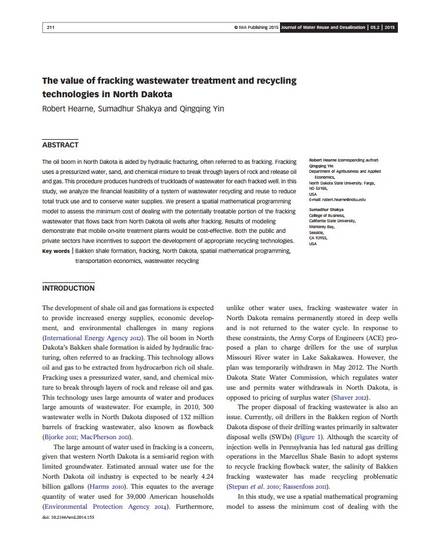
Article
The Value of Fracking Wastewater Treatment and Recycling Technologies in North Dakota
Journal of Water Reuse and Desalination
(2015)
Abstract
The oil boom in North Dakota is aided by hydraulic fracturing, often referred to as fracking. Fracking uses a pressurized water, sand, and chemical mixture to break through layers of rock and release oil and gas. This procedure produces hundreds of truckloads of wastewater for each fracked well. In this study, we analyze the financial feasibility of a system of wastewater recycling and reuse to reduce total truck use and to conserve water supplies. We present a spatial mathematical programming model to assess the minimum cost of dealing with the potentially treatable portion of the fracking wastewater that flows back from North Dakota oil wells after fracking. Results of modeling demonstrate that mobile on-site treatment plants would be cost-effective. Both the public and private sectors have incentives to support the development of appropriate recycling technologies.
Keywords
- Bakken shale formation,
- fracking,
- North Dakota,
- spatial mathematical programming,
- transportation economics,
- wastewater recycling
Disciplines
Publication Date
2015
DOI
10.2166/wrd.2014.153
Citation Information
Hearne, R., Shakya, S., & Yin, Q. (2015). The value of fracking wastewater treatment and recycling technologies in north dakota. Journal of Water Reuse and Desalination, 5(2), 211-222. doi:http://dx.doi.org/10.2166/wrd.2014.153
